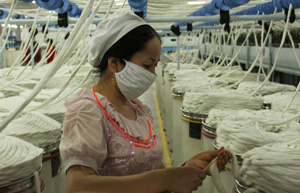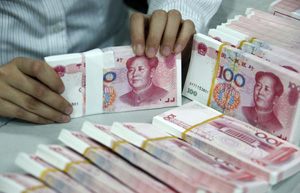Speculation grows of early interest rate cut
(Agencies) Updated: 2014-10-21 07:17New yuan loans plunged to the least since 2009 in July as the benchmark money-market rate rebounded to an average 3.84 percent after exports and manufacturing showed signs of a recovery in the previous month. This time, the central bank may allow funding conditions to remain ample for a while, said Linan Liu, a rates strategist at Deutsche Bank AG in Hong Kong.
"The PBOC has given a clear signal that it's willing to anchor expectations for flush liquidity to stay," Liu said.
PBOC Governor Zhou Xiaochuan last weekend reiterated the need for "prudent" monetary policy amid "steady" economic expansion.
While total financing fell short of expectations, it was still up from 957 billion yuan from August. Money supply grew 12.9 percent, accelerating from 12.8 percent.
The central bank has so far opted for targeted measures to bolster growth, including reserve requirement ratio cuts for smaller banks and a 500 billion yuan provision for the nation's five largest banks. Debt ballooned after the government rolled out a stimulus campaign amid the 2008 financial crisis, while shadow banking, which encompasses off-balance-sheet lending including trusts, also expanded beyond policymakers' direct control.
"Although the lending rate is liberalized, many loans still follow the benchmark, so cutting that will be effective," said Xu Gao, a Beijing-based economist at Everbright Securities Co.
Barclays Plc maintains its forecast for a 25 basis point lowering of the benchmark lending rate this quarter and another in the next three months because this is the only way to meaningfully reduce borrowing costs, economists Jian Chang in Hong Kong and Bill Diviney in Singapore wrote in a note on Wednesday.
|
 |
 |
| China lowers borrowing costs for enterprises | China needs no "big stimulus" despite slowdown |
- IMF official: Growth slowdown welcome
- Key think tank scales back outlook for 2014
- China's central bank sticks to prudent monetary policy
- International monetary system in urgent need of an overhaul
- Central bank advisor stresses prudent policy, not time for rate cut
- China to continue prudent monetary policy: premier
- Dongfeng Nissan's Dalian plant rolls out cars
- Intangible cultural heritage show opens in East China
- Taking the road less traveled for growth
- Dark Horse offers a bright business idea
- Govt bond yields fall most in one month on stimulus bets
- New strategy for China's big cities
- Speculation grows of early interest rate cut
- Clear message from film app firm
















